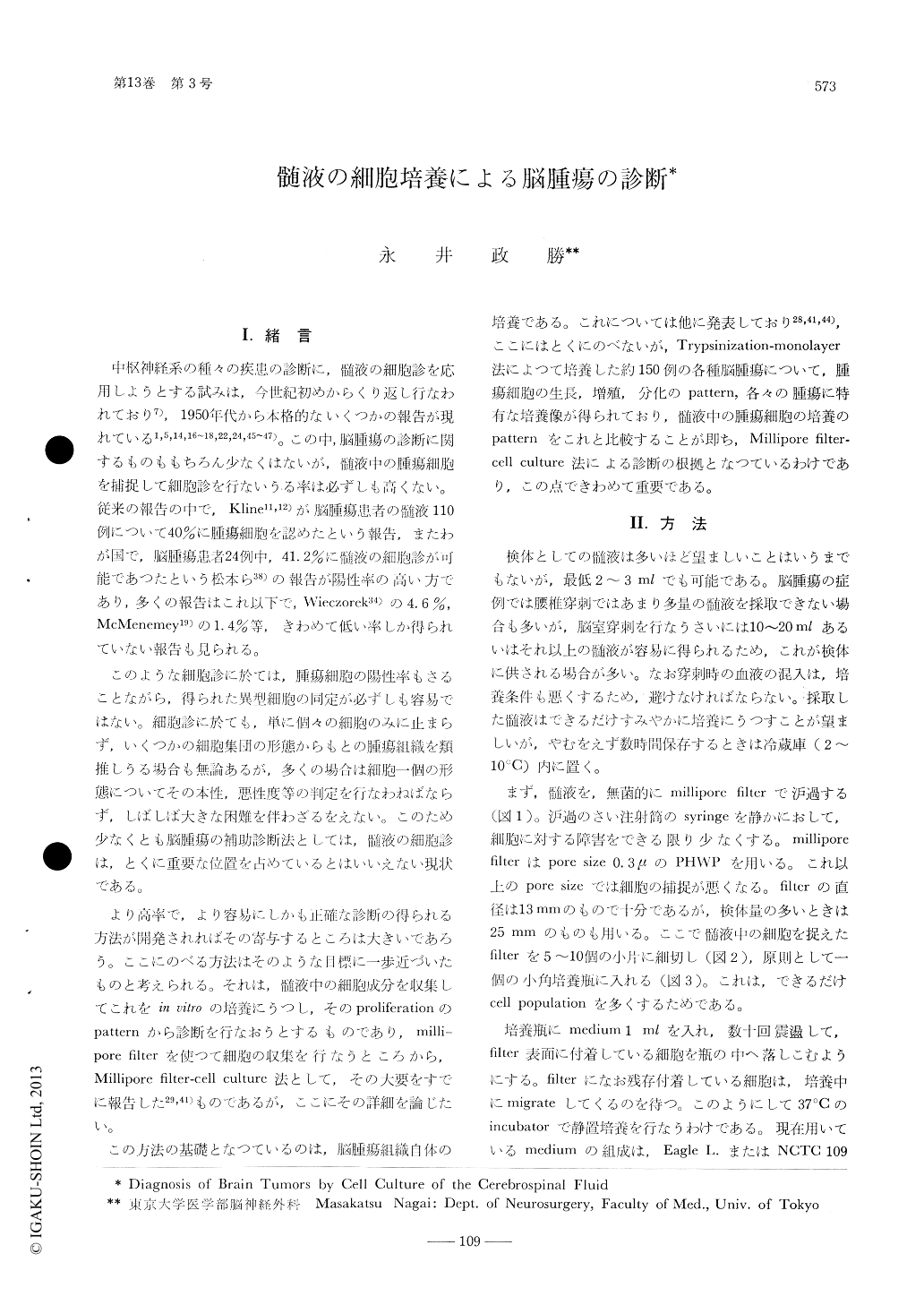Japanese
English
- 有料閲覧
- Abstract 文献概要
- 1ページ目 Look Inside
Ⅰ.緒言
中枢神経系の種々の疾患の診断に,髄液の細胞診を応用しようとする試みは,今世紀初めからくり返し行なわれており7),1950年代から本格的ないくつかの報告が現れている1,5,14,16〜18,22,24,45〜47)。この中,脳腫瘍の診断に関するものももちろん少なくはないが,髄液中の腫瘍細胞を捕捉して細胞診を行ないうる率は必ずしも高くない。従来の報告の中で,Kline11,12)が脳腫瘍患者の髄液110例について40%に腫瘍細胞を認めたという報告,またわが国で,脳腫瘍患者24例中,41.2%に髄液の細胞診が可能であつたという松本ら38)の報告が陽性率の高い方であり,多くの報告はこれ以下で,Wieczorek34)の4.6%,McMenemey19)の1.4%等,きわめて低い率しか得られていない報告も見られる。
このような細胞診に於ては,腫瘍細胞の陽性率もさることながら,得られた異型細胞の同定が必ずしも容易ではない。細胞診に於ても,単に個々の細胞のみに止まらず,いくつかの細胞集団の形態からもとの腫瘍組織を類推しうる場合も無論あるが,多くの場合は細胞一個の形態についてその本性,悪性度等の判定を行なわねばならず,しばしば大きな困難を伴わざるをえない。このため少なくとも脳腫瘍の補助診断法としては,髄液の細胞診は,とくに重要な位置を占めているとはいいえない現状である。
There has been many reports concerning the cytodiagnosis of the cerebrospinal fluid of brain tumors. But their diagnostic value were seemed to be not so high, since the percentages of positive specimens in those methods were low and the diagnosis of the individual atypical cells was difficult to determine.
The authors established a new method of diag-nosis of brain tumors consisting of culture of tumor cells which were exfoliated into the cerebrospinal fluid collected with millipore filter.

Copyright © 1969, Igaku-Shoin Ltd. All rights reserved.


